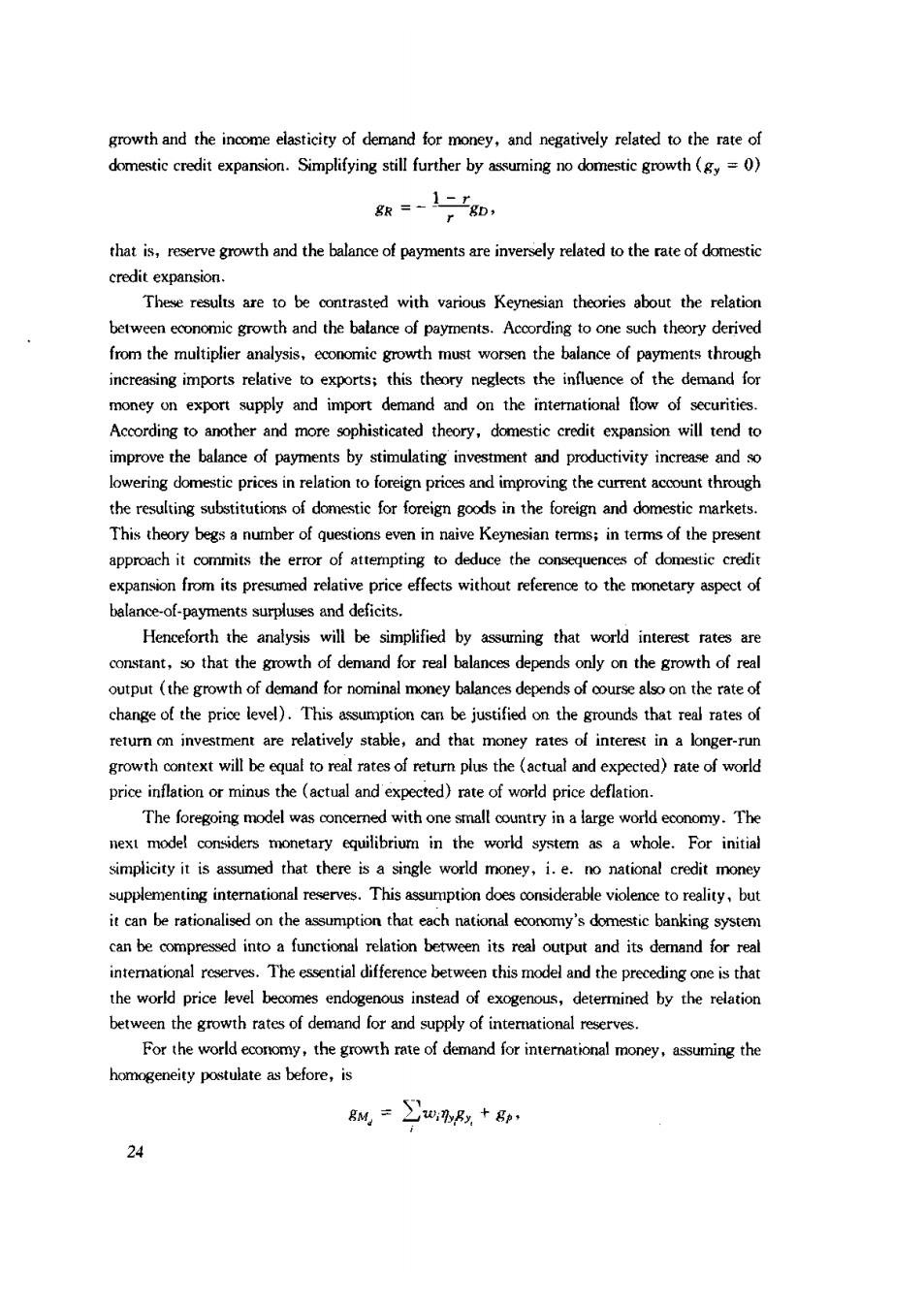正在加载图片...

growth and theinme elasticityof demand for money,and negatively related to therateof domestic credit expansion.Simplifying still further by assuming no domestic growth (g=0) that is,the balnce of related otherateofdomestic credit expansion. These results are to be contrasted with various Keynesian theories about the relation growth and the balance of payments.Acording thory derived from the multiplier analysis,cconomic growth must worsen the balance of payments through increasing imports relative to exports;this theory neglects the influence of the demand for and import demand and on the interational According to another and more sophisticated theory,domestic credit expansion will tend to improve the balance of payments by stimulating investment and productivity increase and so owering omestic price improvingthe ntaccount through the resulting substitutions of domestic for foreign goods in the foreign and domestic markets. This theory begs a number of questions even in naive Keynesian terms;in terms of the present the error of attempting to deduce expansion from its presumed relative price effects without reference to the monetary aspect of balance-of-payments surpluses and deficits. Henceforth the analysis will be simplified by assuming that world interest rates are constant.so that the growth of demand for real balances depends only on the growth of real output (the growth of demand for nominal money balances depends of oourse also on the rate of change of the price leve).This assumption can be justified on the grounds that real rates of return on investment are relatively stable,and that money rates of interest in a longer-run growth context will be equal to real rates of retumn plus the (actual and expected)rate of world price inflationor minus the(actual and expected)rate of world price deflation The foregoing mdel was.Th next model considers monetary equilibrium in the world system as a whole.For initial simplicity it is assumed that there is a single world money. e.no national credit money it can be rationalised on the assumption that each national economy's domestic banking system can be cmpressed into a functional relation between itsrel ouput and its demand for real neThesiffere bet this model and the predngistha the world price level becomes endogenous instead of exogenous,determined by the relation between the growth rates of demand for and supply of intemational serves For the world economy,the growth rate of demand for interational money,assuming the homogeneity postulate as before,is